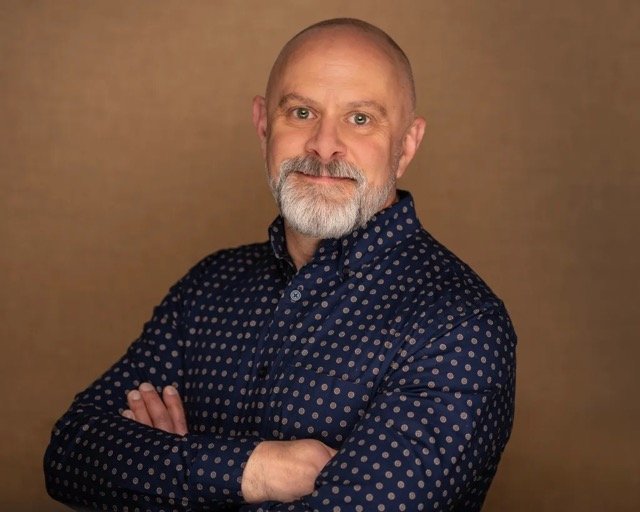In Julia Cameron’s essential book for creatives, The Artist's Way, she introduces the concept of the "Artist Date" as a key tool for nurturing creativity. Personally, I’ve been in a bit of a rut lately, especially working alone from home, where my office is located. With little travel and limited socializing, I’ve been feeling lonely and stuck.
When I go for local hikes in parks, I shoot for around five miles to clear my head, problem-solve, burn calories, and enjoy the fresh air. I love doing this, and with ADHD, exercise is even more important to help us clear the cobwebs.
Feeling in a rut lately, I had been kicking around the idea of a hike, but decided instead to surround myself with people again, so I did something for the first time ever: I took a mental health day off, something Cameron calls an Artist Date.
Key Principles of the Artist Date:
Solo Activity: The Artist Date is meant to be done alone. This is important because it allows you to reconnect with your inner artist without distractions or the influence of others.
Fun and Playful: The activity should be something that feels like fun rather than work. It’s about indulging your curiosity and sense of wonder, whether that's through visiting a museum, browsing a bookstore, watching a movie in a theatre, or even engaging in a playful, hands-on activity like painting or crafting.
Inspiration: The purpose of the Artist Date is to inspire you. It’s about filling the creative well with new experiences, sights, sounds, and sensations that can later fuel your artistic work.
Non-Productivity Focused: The Artist Date is not about producing something or achieving a goal. It’s purely about the experience and enjoyment of the activity, which can indirectly stimulate creative ideas and energy.
Rather than spending time as I do each day, dwelling on business development ideas or stewing in self-doubt, which hits entrepreneurs like a ton of bricks, I loosely planned my six-mile route around downtown Nashville. It had been ages since I walked the streets of the city I've called home since 2007.
I might have appeared a tad too excited in this photo. :)
I parked my car in the affluent Gulch neighborhood and enjoyed a fancy coffee at a fancy cafe, observing fancy people talking about fancy things. I walked to a former industrial building turned office and retail space, and wandered inside, something I hadn’t done since having clients there years ago. I was happy to see a favorite sushi restaurant still in business and saddened to remember that a classic used bookshop was no longer there. I enjoyed another coffee and wrote in my journal in the gorgeous lobby of the former Union (train) Station (turned) Hotel. It reminded me of meeting Billy Bragg & Joe Henry there once as they performed classic train-inspired songs. I also delivered presentations and workshops there on several occasions for private events.
I walked a short distance from Union Station to the Frist Art Museum. I enjoyed the Lee Alexander McQueen & Ann Ray: Rendez-Vous exhibit, a world of fashion I know nothing about, and ¡Printing the Revolution! The Rise and Impact of Chicano Graphics, 1965 to Now. Both left an impression on me about creative ideas I’ve had but never acted upon, like printmaking and photography. I also enjoyed a quick observation of the renovated children’s area. I quickly recalled many visits with my kids for hands-on printmaking, painting, and stop-motion videos so many years ago.
After the Frist, I walked through the heat up Broadway through Vanderbilt University’s pretty grounds and to Hillsboro Village. I settled in the welcomed air conditioning at Fido, a favorite local coffee shop I hadn’t been to in years. I used to frequent Fido daily for coffee and food when I worked just up the road when I first moved to Nashville in 2007. It seems like a lifetime ago. I sat at the window barstool table, ate a breakfast burrito, and watched the world pass by. I commented on Facebook how I have lived in Nashville long enough to miss the old Nashville; if you know, you know.
Once fully dried off from my sweaty hike to Fido, I walked back down to the Gulch along the shady Music Row streets, where country music dreams are created and crushed. I popped my head into a few other spots along the way but decided it was time to get back to the car, crank on the AC, and dry off again for a second time that day. August in the South is HOT!
My Artist Date day spent walking six miles, visiting old favorites, seeing new things, and taking breaks for journaling, reading, rumination, and coffee—so many coffees—was exactly what I needed. It was a day of not thinking about my business, not feeling worried about the future, not dwelling on the past, but just being present in each moment of re-discovering Music City, aka - home.
This post was first published in my Nice Maker Newsletter on August 11, 2024.
Also read: It’s okay to be lonely.















